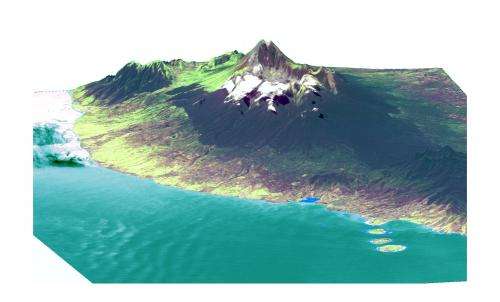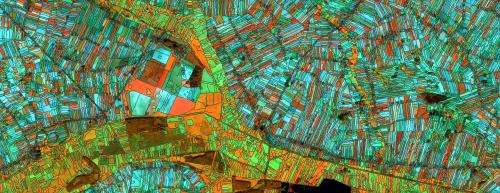Nature valued from space

Satellites show how we can promote economic development in an environmentally sustainable manner by putting a price on nature's resources.
Located on the Indonesian island of Lombok, the Mount Rinjani National Park is an important ecosystem for numerous endangered plants and animals. Just outside the park's boundaries, the fertile soils are exploited for agriculture and much of the forest has been cleared away for farmland.
These farms are of great importance to the local economy, but deforestation has gravely affected water availability over the last decade. While the farms may contribute to an economic profit, the troubles experienced by upstream communities – and the island as a whole – likely cause a deficit.
In many cases, a natural ecosystem's economic value outweighs the potential economic gain by destroying it. How? In the Lombok example, the forest provides water security and filtration, is a natural carbon store, protects against soil erosion and has the potential for ecotourism.
Putting a price on these features is one way to find out if keeping the forest is more profitable than destroying it for farming.
Satellites are being used to create digital elevation models of Mount Rinjani, as well as land use and land cover maps to support hydrological calculations and classify forests. Estimates of forest volume and density help to calculate carbon sequestration. These efforts help in assessing the value of Lombok's forest resource.
This concept of 'natural capital accounting' – also known as Ecosystems Service Assessments – can also be applied to wetlands, deserts, rangelands, grasslands and coastal areas. All of our natural reserves provide valuable assets to society in terms of measurable and accountable services.

ESA is already a world leader in environmental monitoring through numerous programmes and initiatives in climate variability and risk assessments, coastal monitoring, global wetlands monitoring, mapping of biodiversity, assessments of renewable energies, water management and certification of sustainable forest management.
Working with a consortium of experts from five specialist Earth observation service companies, ESA is now increasing its efforts in Ecosystems Service Assessments. Following initiatives by the European Environment Agency and the Joint Research Centre, ESA is improving its capacity to measure natural capital around the world using satellite data to promote sustainable development.
Demonstration trials include coastal reef and sea grass studies in Australia and Yucatan, Mexico, to investigate the economic value of the reefs' coastal protection abilities and fish habitats.
Other trials value forest carbon storage, water purification, soil retention and nutrient cycling capabilities linked to sustainable forest management practices in Vietnam, Peru and Lombok.
The aim is to derive the economic value of the specific ecosystems addressed in each area for a selected group of users whose natural resources are threatened by industrialisation and bad land use management.
This kind of evaluation is appealing to policy-makers as national efforts can be implemented to incorporate the value of a country's natural resource into the country's monetary accounts. This can be done by accounting for the effects of air pollution and depletion of natural resources on a given country's gross domestic product, thereby giving a clearer picture of the country's economy.
No matter how ecosystem services are evaluated, good data are needed. To improve the economic evaluation of ecosystems on the local, regional and country scales, there is a need for higher resolution data and long-term data consistency.
The upcoming family of Sentinel satellites being developed under Europe's Global Monitoring for Environment and Security programme will satisfy these needs. The Sentinels will deliver consistent, global, high-resolution data that will be made available for the potential use of ecosystem assessment.
Provided by European Space Agency

















